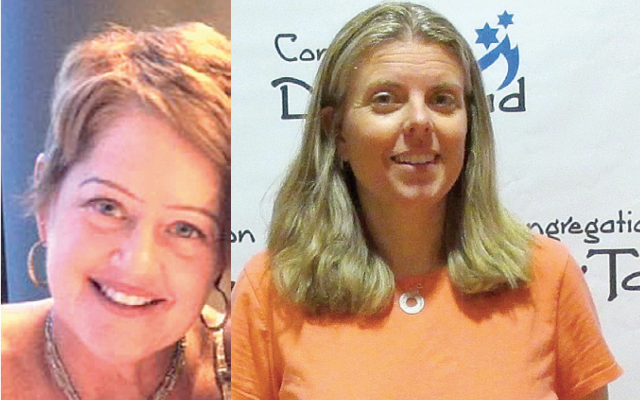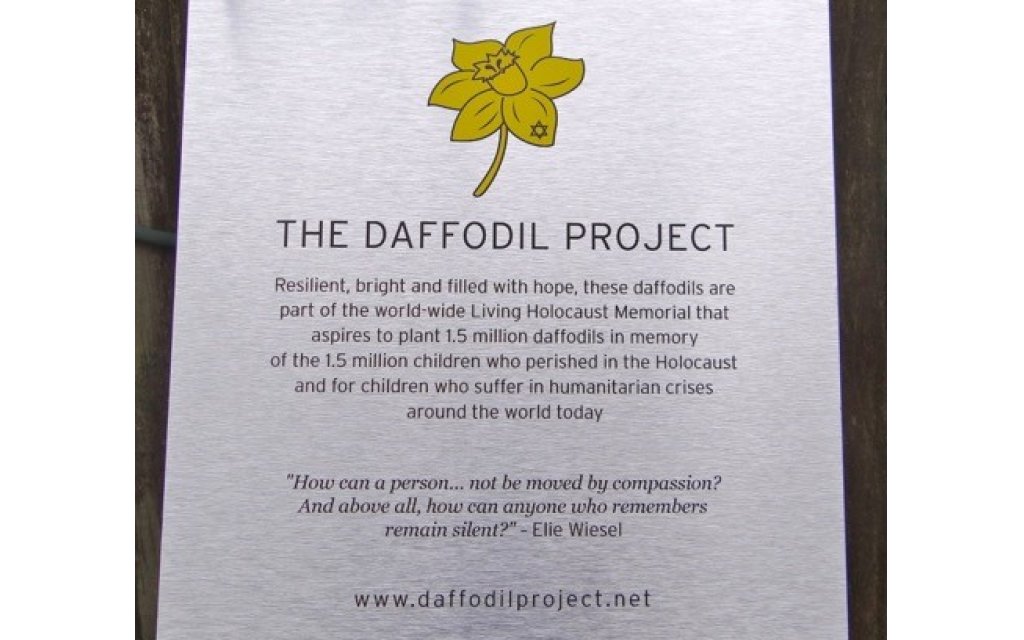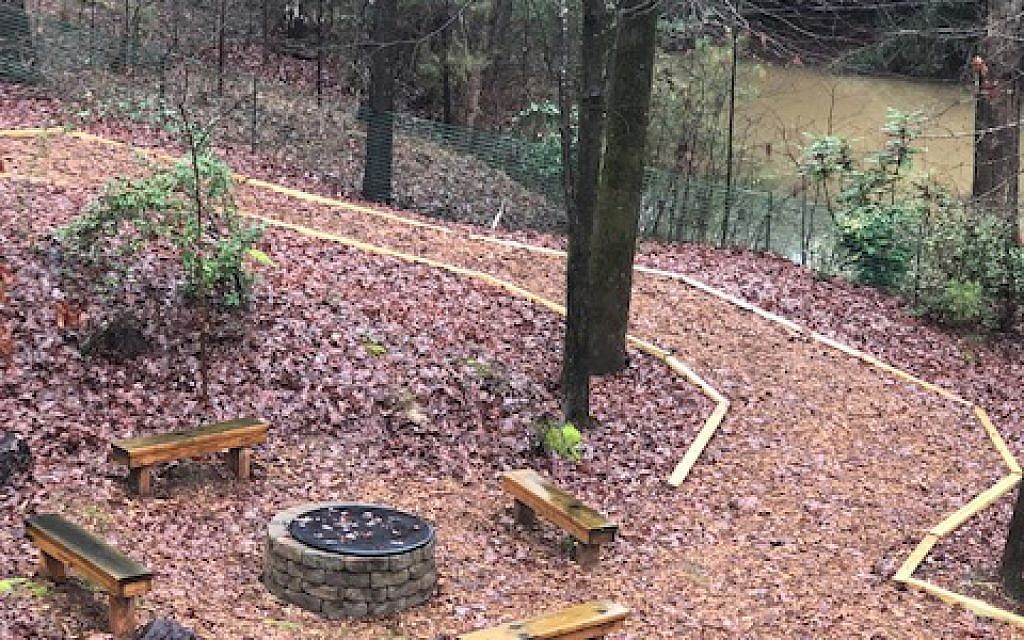CDT To Plant Daffodils for Holocaust and Tu B’Shevat
Congregation Dor Tamid is the latest Atlanta-area synagogue to join The Daffodil Project.

Congregation Dor Tamid is the latest Atlanta-area synagogue to join The Daffodil Project, a worldwide program launched in Atlanta in 2010 by Am Yisrael Chai to plant 1.5 million daffodil bulbs in memory of the 1.5 million children who were killed in the Holocaust. The Alpharetta synagogue will be planting its bulbs Sunday.
“We’re trying to get every Atlanta synagogue involved,” said Am Yisrael Chai president Andrea Videlefsky. “We’ve got about half.” While, in most cases, the nonprofit Holocaust education and awareness organization approaches a synagogue to participate in the project, CDT actually reached out first. “We were thrilled,” Videlefsky told the AJT.
Molly Peled, the religious school director, and Rabbi Jordan Ottenstein decided to change the Alpharetta synagogue’s school curriculum to make it more community-oriented with more hands-on learning, said Stacey Jahanfar, CDT’s religious school assistant and communications coordinator.
“The seventh to 12th grades already do that with field trips and we wanted something to entice the younger children,” she explained.
The Daffodil Project was chosen partly because the bulb planting this weekend is close to Tu B’Shevat, “and we wanted to do something related” to the traditional tree-planting holiday. “We also wanted to raise our profile in the community and be more a part of it,” she said. Dor Tamid’s membership includes about 300 families. The school, which goes from pre-K to 12th grade, has 180 students enrolled.
The actual daffodil bulb planting at Dor Tamid is scheduled for the afternoon, after Videlefsky makes a presentation to the children. The plan is to plant 250 bulbs provided by Am Yisrael Chai. “We provide the first 250 bulbs to any new organization with the understanding that they will plant a minimum of an additional 250 bulbs within the first year,” Videlefsky said. “The synagogues don’t have to continue beyond the minimum 500, but they must look after the garden as a memorial garden and display the plaque.”
Videlefsky says she plans to explain to the children of Dor Tamid that this is an action project with which they can be involved. “Children are the future. We need to learn about the past and apply it to the world today and try to build a better future,” she says. “We bring the lessons of the Holocaust to the real world of today.”

Am Yisrael Chai achieves that goal by not only focusing on the memory of the children murdered during the Holocaust, but by supporting programs in Darfur, South Sudan and Rwanda. Although Videlefsky says her group researched which programs to which they could “make meaningful contributions,” she acknowledged that it is also personal with her.
She is a native of Johannesburg, South Africa, and came to the United States in 1993. “My own heritage brought me to this project. I’ve always been interested in Holocaust history. Extended family members perished in the Holocaust. I believe every Jewish person is directly connected to the Holocaust.” And, she emphasizes a connection between the Holocaust and today’s refugee crisis.
In addition to the bulb planting, Am Yisrael Chai sponsors the Daffodil Dash to raise awareness and funds for Holocaust education and, according to its website, for those suffering genocide and other humanitarian crises in the world today.

A week after The Daffodil Project, on Jan. 20, Holocaust survivor Marion Blumenthal will present her story at the Hope and Perseverance Program at the Byers Theatre in the Sandy Springs Performing Arts Center.
Videlefsky says she came up with the idea of planting daffodils because the shape and color are reminiscent of the yellow stars Jews were forced to wear during the Holocaust and because daffodils are resilient; they return each spring.
So far, more than a half a million bulbs have been planted in 200 locations worldwide as a part of the Daffodil Project, including Israel, Poland, Germany, Czech Republic, the Netherlands, Canada and Japan.
The goal is to plant 50,000 to 75,000 each year until 1.5 million bulbs are planted.

The City of Atlanta has planted the largest number of bulbs in the area, with some 280,000 planted from the Center for Civil and Human Rights to the King Center. “It’s called the Ribbon of Consciousness,” Videlefsky said. “Clarkston, which has the highest number of refugees per capita in the United States, has planted daffodils.” So have many synagogues, churches, botanical gardens and city parks.
Because of Atlanta’s temperate climate, the season for planting daffodil bulbs continues until Martin Luther King Jr. Day.
In fact, the City of Dunwoody’s MLK Jr. Day of Service on Jan. 21 will include a large daffodil planting in the Liane Levetan Park in Brook Run. Levetan, the first woman on the DeKalb County Commission and the first female CEO of the commission, told the AJT that she feels “privileged that the group wanted to plant the bulbs in my park,” which she said covers more than 100 acres.
Born in Vienna in 1936, Levetan fled the Nazis in 1939 with her parents and spent World War II in London. The Daffodil Project has special meaning to Levetan, who said that William Woodsworth’s poem, “Daffodils” was her favorite growing up. “As a child in London, I memorized it.”



comments